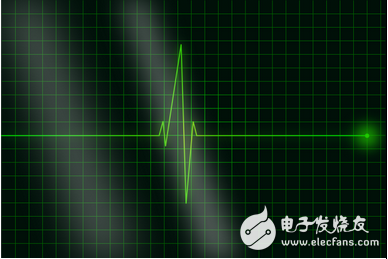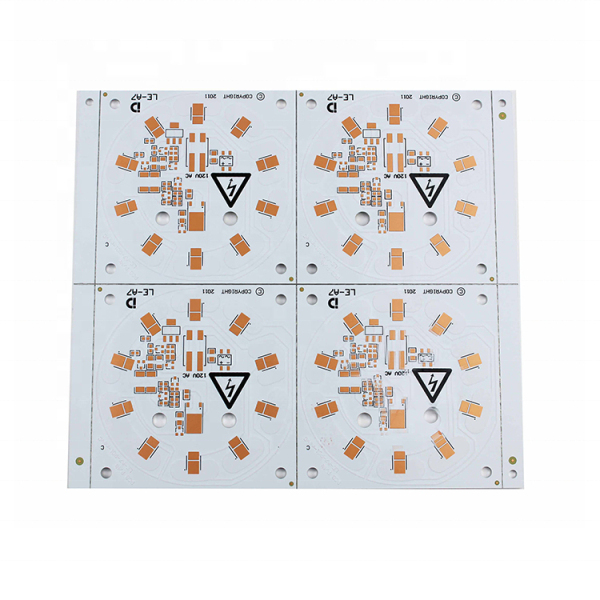With the popularity of mobile devices and the Internet of Things, the amount of data transmission continues to grow in equal proportions every year, and we therefore need higher transmission rates. The key to meeting these needs lies in the maturity of 5G technology. Since the existing spectrum resources are quite tight, it is imperative to perform channel detection and search for frequencies suitable for 5G mobile transmission in higher frequency bands, and the instruments for spectrum analysis often play an important role.

At present, the communication methods commonly used in life mostly rely on the technology of transmitting signals by radio waves, including Bluetooth, wireless networks, mobile communications, satellite communications, and broadcasting. In order to establish a global high-speed wireless network environment, SpaceX, a space company established by Elon Musk, plans to launch 4,425 communications satellites in the future to provide high-speed transmission rates of around 1 Gbit/s. The development of mobile communication technology from 4G to 5G is expected to increase to 10Gbit/s.
There are two main ways to increase the transmission rate. One is to increase the spectral efficiency, and the other is to increase the bandwidth. Since the same frequency can only be used once, increasing the spectral efficiency is like plugging more bits of 0 and 1 into a fixed-frequency electromagnetic wave, but such a signal will be more susceptible to interference or decoding errors; and wireless networks, the Internet of Things The electromagnetic wave frequencies of mobile communication and AM, FM and other broadcasts are all squeezed below 6 GHz. It is difficult to increase the bandwidth. Therefore, to find new spectrum resources for 5G communication use, only to the higher frequency millimeter wave (Millimeter Wave) can go all the way.
What is the millimeter wave? Where is the application domain?Generally, satellite communication, satellite positioning, radar and microwave communication generally use electromagnetic waves with a frequency of 1 to 100 GHz, and electromagnetic waves with a frequency of 30 to 300 GHz (equivalent to a wavelength of 1 to 10 mm) are called "millimeter waves". Therefore, all of the above communication methods will be used. Use the frequency band to the millimeter wave.
The maximum signal bandwidth of wireless communication is about 5% of the carrier frequency. The higher the carrier frequency, the larger the signal bandwidth that can be achieved. Carriers with the highest frequency in the 4G-LTE band are at around 2 GHz, and the available bandwidth is only 100 MHz. Therefore, if the 5G band is used in the future, the bandwidth will easily increase by a factor of 10 and the transmission rate will increase dramatically. Recently, Keysight has also cooperated with the National Research Institute Chip Center to use the "millimeter wave front-end circuit system technology" with Keysight's 5G baseband signal verification database software for the teaching of 5G millimeter wave RF front-end technology in Taiwan academic circles. Research use to accelerate the implementation of 5G technology.
In addition to the next generation of mobile communications, millimeter waves have potential in consumer and commercial applications, including wireless sensor networks, airport security scans, etc., which can drive further research and demand growth in the millimeter wave field.
Because millimeter wave can provide high frequency signal testing, filtering and transmission in wireless communication networks, it can also be applied in military defense and aerospace, and its performance is better than traditional microwave or infrared sensing technology. For example, a millimeter-wave radar installed on an airplane or a satellite can perform functions such as anti-collision warning sensing, autonomous cruise control, robot vision, and air defense monitoring. Millimeter-wave imaging can detect hidden objects, such as weapons, explosives, or drugs under the cover of clothing or clothing.
The key role of spectrum analysisMillimeter wave communication has the characteristics of high transmission rate and short-range high-frequency applications, but it also has its limitations, such as fast signal attenuation, easy blocking, short coverage distance, etc., especially at 60GHz, it will withstand about 20dB/km of oxygen. Absorption loss. Therefore, 5G communication should be applied in the high-frequency millimeter wave range, and it must be confirmed that these frequencies can operate smoothly in a multi-path environment and can be used for non-visual distance communication.
In the field of exploring unknown high-frequency signals, spectrum analysis is an indispensable step for electronic engineering technicians; and the efficiency of the spectrum analysis instruments they use will influence the research results. Modern signal analyzers are more comprehensive than general spectrum analyzers. In addition to the frequency domain, they can provide analysis of time domain and modulation domain. The application fields are quite extensive: such as satellite systems, radio communication systems, and mobile phone system base station radiation fields. Strong measurement, electromagnetic interference and other high-frequency signal detection and analysis, as well as signal components, signal distortion, signal attenuation, electronic component gain and other characteristics.
Usually, the RF signal contained in each measurement cannot be expected to change with time. Technicians or scientists often face rare or transient events, or the signal is masked by strong noise. In order to view, capture and analyze the most erratic signals, for example, to quickly find pulse or intermittent signals in an environment filled with various signals, it is necessary to rely on the "on-the-fly spectrum" function of the signal analyzer. This also means that the signal analyzer must sample the input signal at a fast enough rate to process all of the signal quantities in the frequency band of interest; it can also perform all calculations continuously to analyze the output to keep up with changes in the input signal.
What are Aluminium PCBs used for?
Features of aluminum substrate
1. Adopt surface mount technology (Surface-Mount (SMT) &BGA Assembly);
2. It is extremely useful to deal with thermal diffusion in the circuit design plan;
3. Lower the operating temperature of the product, improve the power density and reliability of the product, and extend the service life of the product;
4. Reduce the volume of goods, reduce hardware and installation costs;
5. Replace the fragile ceramic substrate printed board, and achieve very good mechanical durability.

Aluminum-based copper clad laminate is a kind of metal circuit board material, which is composed of copper foil, thermally conductive insulating layer and metal substrate. Its layout is divided into three layers:
Cireuitl.Layer circuit layer: equivalent to the copper clad laminate of a normal PCB, the thickness of the circuit copper foil is loz to 10oz.
Dielcctric Layer insulation layer: The insulation layer is a layer of low thermal resistance and thermal conductivity insulation material. Thickness: 0.003" to 0.006" inches is the core design site of aluminum-based copper clad laminates, which has obtained UL certification.
Base Layer: It is a metal substrate, usually aluminum or copper, which can be selected. Aluminum-based copper clad laminates and traditional epoxy glass cloth laminates, etc.


1. Audio equipment: input and output amplifiers, balanced amplifiers, audio amplifiers, pre-amplifiers, power amplifiers, etc.
2. Power supply equipment: switching regulator, DC/AC converter, SW regulator, etc.
3. Communication electronic equipment: high-frequency amplifier `filter electrical` transmission circuit.
4. Office automation equipment: motor drives, etc.
5. Automobile: electronic regulator, igniter, power controller, etc.
6. Computer: CPU board, floppy disk drive, power supply equipment, etc.
7. Power module: converter `solid relay` rectifier bridge, etc.
8. Lamps and lanterns: Following the initiation of energy-saving lamps, aluminum substrates used in Aluminum LED boards have also begun to be used on a large scale
Aluminum 2.0W Led Board,Aluminum Pcba Pcbway,Aluminum Pcb Metal Core Pcb,Aluminum Pcb Vs Fr4
HAODA ELECTRONIC CO.,LIMITED , https://www.pcbhdi.com